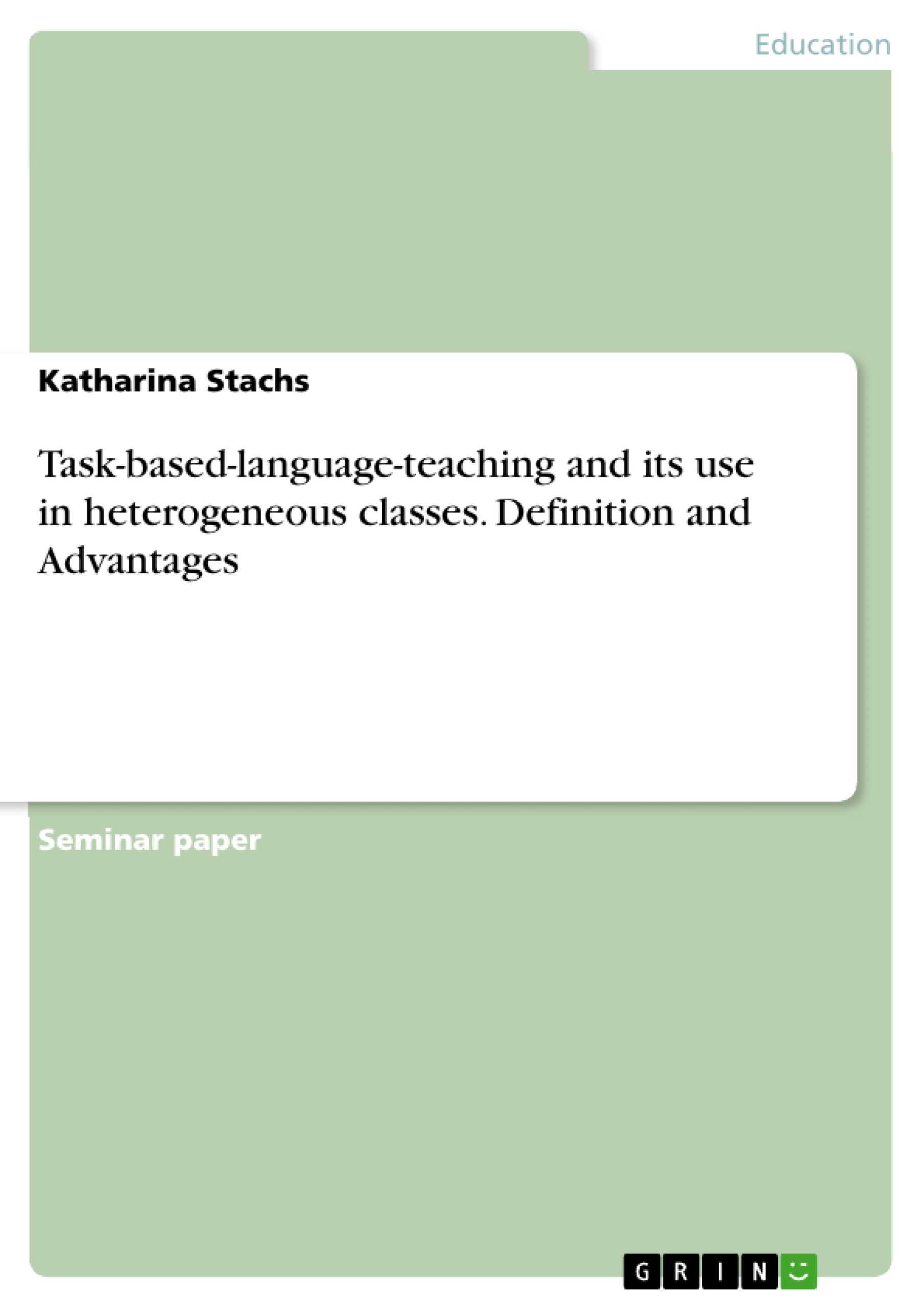The entire German school system is traditionally designed to homogeneity. By avoiding various class alliances, the school policy hopes to achieve an appropriate increase of performance. Mental under- and overload should be avoided by the prevention of heterogeneous learning communities; however, the usefulness of such homogeneous classes is controversial.
The results of national and international comparisons of school systems, as the Program for International Student Assessment (PISA), led to a rethink in the German school system. The individual support for pupils, including their requirements for teachers, were dedicated much attention to. Most of the secondary classes are heterogeneous classes. All Students bring a variety of skills and abilities to school. In fact, it is not easy to find an appropriate methodical approach to deal with such a constellation.
The first chapter provides a definition of heterogeneity and information on different factors which lead to heterogeneity in school. The second chapter reveals the attitude of a teacher in a mixed ability classroom and how he needs to accomplish teaching in a heterogeneous class. The next chapter outlines a possible approach which can be implemented in school to make a classroom a good fit for each learner. First a definition of TBLT (Task-based-language-teaching) is given, then the advantages of this approach are highlighted. Finally, the use of TBLT in heterogeneous classes is made clear. Chapter four sums up all the important points and displays possible renewals of heterogeneity in schools.
Table of Contents
- Introduction
- Definition of heterogeneity
- Types of heterogeneity in school
- Heterogeneity in the classroom
- Blending of TBLT and heterogeneous classes
- Definition of TBLT
- Advantages of TBLT
- TBLT in heterogeneous classroom
- Conclusion
Objectives and Key Themes
This essay explores the implications of human diversity and the resulting expectations for schools and their teaching methods. It delves into the historical roots of this discussion, examining the criticism of "Verschiedenheit der Köpfe¹" by Johann Friedrich Herbart and the subsequent call for teaching aligned to the "Mittelköpfe²" by Ernst Christian Trapp. The essay aims to provide a critical analysis of the traditional approach to teaching, which focuses on the average student, and argues for more inclusive and adaptable methods. It emphasizes the need to address the increasing divergence among students due to factors such as age, cognitive performance, motivation, and socio-cultural background.
- The challenges of teaching in heterogeneous classrooms
- The limitations of traditional teaching methods for diverse learners
- The potential of Task-Based Language Teaching (TBLT) to address heterogeneity
- The importance of individualizing instruction and providing differentiated learning experiences
- The need for a shift towards a more inclusive and equitable educational system
Chapter Summaries
The first chapter defines heterogeneity and explores various factors that contribute to diversity in schools, including socio-cultural heterogeneity, migration-related heterogeneity, linguistic heterogeneity, and age-related heterogeneity. The second chapter examines the challenges faced by teachers in heterogeneous classrooms, emphasizing the need for individualized instruction and differentiated learning approaches. The third chapter introduces Task-Based Language Teaching (TBLT) as a potential solution to address heterogeneity. It defines TBLT, highlights its advantages, and explores its implementation in heterogeneous classrooms.
Keywords
Heterogeneity, diversity, inclusive education, differentiated instruction, Task-Based Language Teaching (TBLT), individualization, student diversity, learning styles, cognitive performance, motivation, socio-cultural background, migration, language acquisition, educational equity, school system, teaching methods, classroom management, assessment.
- Quote paper
- Katharina Stachs (Author), 2014, Task-based-language-teaching and its use in heterogeneous classes. Definition and Advantages, Munich, GRIN Verlag, https://www.grin.com/document/337346



